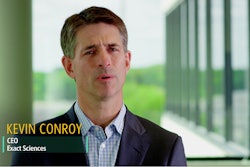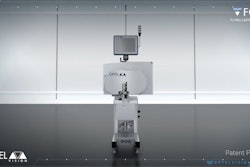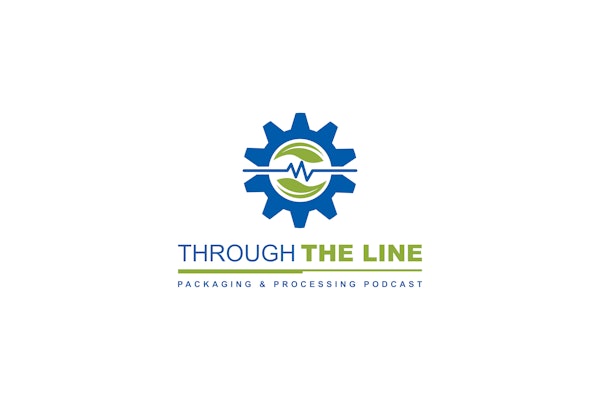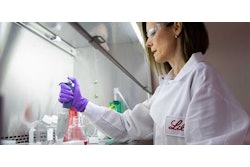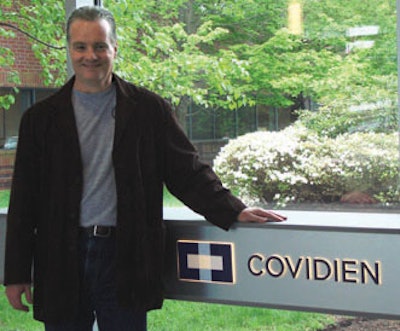
In this question-and-answer article, Kevin Mulligan explores how this relationship effects the package design equation. Mulligan is senior director, Global Packaging, Covidien, a Mansfield, MA-based global provider of healthcare products, formerly known as Tyco Healthcare. Covidien spun off from Tyco International in mid-2007. A 30-year industry professional, Mulligan is also a member of the Packaging Management Council (PMC), an association of senior packaging managers from consumer and industrial goods manufacturing companies, facilitated by PMMI, the Packaging Machinery Manufacturers Institute.
Q: Describe Coviden's process for package development, whether for a new product launch or a brand refresh?
A: With five different divisions ranging from pharmaceuticals and medical devices to retail products, we approach the packaging development process based on the needs of the consumer and the purpose of the product. Like many companies, we employ a stage-gate process. Beginning with the concept phase, our first steps are to establish criteria that will guide the development process.
This progression usually begins with identifying what the goal of the product is from a consumer approach, and what our intention is from a business perspective. If we are launching a new product, for example, we have to determine how important the package will be to the product. Often a package will be integral to the functionality or design of the product or an extension of it, rather than just an outer casing. At the same time, we work with our customers and the marketing department to determine what will make the package appealing.
We've also found it to be quite beneficial to integrate the graphics and engineering portions of our packaging divisions in the early stages of design. This is critical for us in the long run as it gets our team engaged in designing the package and helps ensure that all the appropriate issues are addressed up front rather than later in the development process when they can become costly in terms of time and investment.
Of course, costs in general are an important factor when conceptualizing and planning for a new product or brand re-launch. The key to success here is to understand the overall business plan and projections for the product's lifecycle. It is not uncommon for a product's packaging to change in years two, three, and four of its life span, so we need to be aware of this when selecting machinery and materials.
For example, many of our products run on standard form/fill/seal equipment. In some instances, however, we look to introduce a new product, which may require a unique package incapable of being run on our capital equipment. Because costs are an important factor in the packaging equation and our business, we need to be sure that the investment in the product and its packaging will result in a positive return on investment (ROI).
In these instances we will work with an outside company to package small volumes of our product. If the product meets the business plan forecast we have set and any relevant regulatory requirements, we will move the application in-house and begin running it on our production line. This type of example shows how important it is to balance short- and long-term business goals of a product and how important the packaging is to us.
Q: Are there any other elements that should be considered early in the package design process?
A: Besides cost, design is the other critical factor in a customer's decision to choose one product over another. Design preferences are usually based on the individual's needs and can range from the aesthetic to functionality and ease of use. We'll also often consider how the package will be disposed of and factor that into the development process.
To satisfy these goals, we begin researching and examining machinery and materials from both the design and cost perspectives in the early stages of package development. When selecting machinery and materials, we'll consider the supply chain as a whole to see how products will be tracked, such as bar-coding technologies, which are becoming highly regulated in the drug and device industries. Taking this approach allows us to determine upfront manufacturing costs and can also help us avoid unnecessary expenses and possible recalls down the line.
Q: Covidien is a spin off from Tyco International. Has that shift had an impact on how you package products?
A: Absolutely. In fact, we are currently re-branding our entire product line. The packaging division is heavily involved in developing our new brand design, and has been since the process began. This is a testament to our philosophy of having everyone involved in the development process early on. In this case, we as the engineers ensure that the new designs and concepts are feasible to incorporate into our packaging. It also gives us an opportunity to introduce new elements such as bar coding and radio frequency identification (RFID).
Q: Market testing is an important element in package development. Where does it fit into the design process at Covidien?
A: In most instances market testing is incorporated in the initial stages of the development process. Most frequently it occurs in the concept stage because you can uncover strong ideas and incorporate them as you move forward.
In some companies, packaging is looked at as an afterthought. However, since the package is integral to the functionality and overall look of our products, it is extremely important to Covidien.
For existing products, market testing is an ideal way to research graphical needs and identify improvements that will result in a more visually appealing package. Our marketing teams gather the data and share it with the engineering group, which is tasked with integrating the information into the package in a seamless manner.
Staying in tune with the "voice of the customer" allows us to enhance our product and hopefully make the sale over our competition. The market-testing phase also offers an ideal opportunity to gauge other issues important to the customer such as sustainability, which has become a dominant issue in packaging.
Q: What are the drivers behind proper selection and use of machinery and materials when developing a product?
A: In the device industry you will find that regulations often limit how innovative you can be with design, but there are still many factors to be considered.
Proper selection begins with the question, "What is the purpose of the end product?" If a product will require a delivery system, for example, we need to examine the requirements behind the design to properly choose what equipment to purchase to manufacture it, and what materials best complement the design. We also have to analyze whether the new packaging can be manufactured on existing production lines or whether it will require an entirely new process.
It often comes down to a question of capacity--whether or not our existing machinery can withstand an additional product run. When we purchase new systems, it's often because we feel there is great potential in a product and need to run high volumes, or we are looking to launch a product with an entirely new design that our current machinery cannot accommodate.
Material selection is also vital to the success of a package from both a structural standpoint and overall design. At Covidien, our strategic sourcing teams work directly with our partners to select the highest quality materials that best complement the product. Cost is certainly a factor, but we recognize success requires a certain level of investment.
We go through much of this strategy early in the development phase to ensure we make well-informed decisions when it comes to equipment and materials. Our engineering and design teams work together to establish a list of possible solutions, so everyone has a clear understanding of the requirements. Each group then recommends the strongest options that fit our needs. Taking this team approach offers the added advantage of having our employees stay in tune with the needs of the organization as a whole, rather than becoming "siloed" in their individual areas of focus.
Q: How important are materials and machinery suppliers to Covidien?
A: Covidien views our suppliers as strategic partners rather than just a "retail store" where we purchase machinery or materials. Our partners need to be flexible and open-minded to understand our strategies and to adapt to changing market requirements and regulations.
Covidien works with a small, core group of vendors, all of whom have demonstrated their ability to contribute to our product packaging year after year with new equipment or next-generation materials. Our suppliers also have great skill in tweaking our existing processes to make them better. We've developed strong partnerships with these companies, so we feel completely comfortable communicating with them about where we want to bring our company. We also encourage our suppliers to think outside the box and come to us with solutions that others cannot.
Q: Where do you look to source information about packaging material and machinery innovations?
A: We try to go to the most important global trade shows, including Pack Expo. While we often source equipment from Europe and North America, there is a lot of innovation going on across the globe. We keep a close eye on what's happening with machinery and material innovations in Asia and Latin America. Trade shows also provide exposure to smaller suppliers that we may not have known about but may have solutions that meet the requirements and criteria we have set for a particular project.
We also rely heavily on working with industry regulators such as the Food and Drug Administration (FDA) and its global counterparts in conferences and workshops. Events like these also provide a forum for us to meet with other industry professionals and share information. On the security side, for example, we can discuss different approaches and share what methods have worked or not worked.
Covidien also taps into industry forums such as the Association of Operating Room Nurses (AORN), which offers insight into what nurses and doctors would like to see from the products they use, which often directly affects packaging. There are also discussion boards such as the Health Industry Distribution Association (HIDA), which allows us to learn about logistical issues.
Using these varied outlets to research and explore new innovations and technologies will continue to drive the industry. They will also help standardize many processes, ensuring product safety and that industry regulations are being adhered to. [HCP]
Editor's Note: This story is supplied by PMMI, a trade association with more than 550 member companies that manufacture packaging and packaging-related converting machinery, machinery components, containers and materials in the United States and Canada. PMMI organizes the Pack Expo trade shows, including Pack Expo Intl., Nov. 9-13, 2008 in Chicago.



